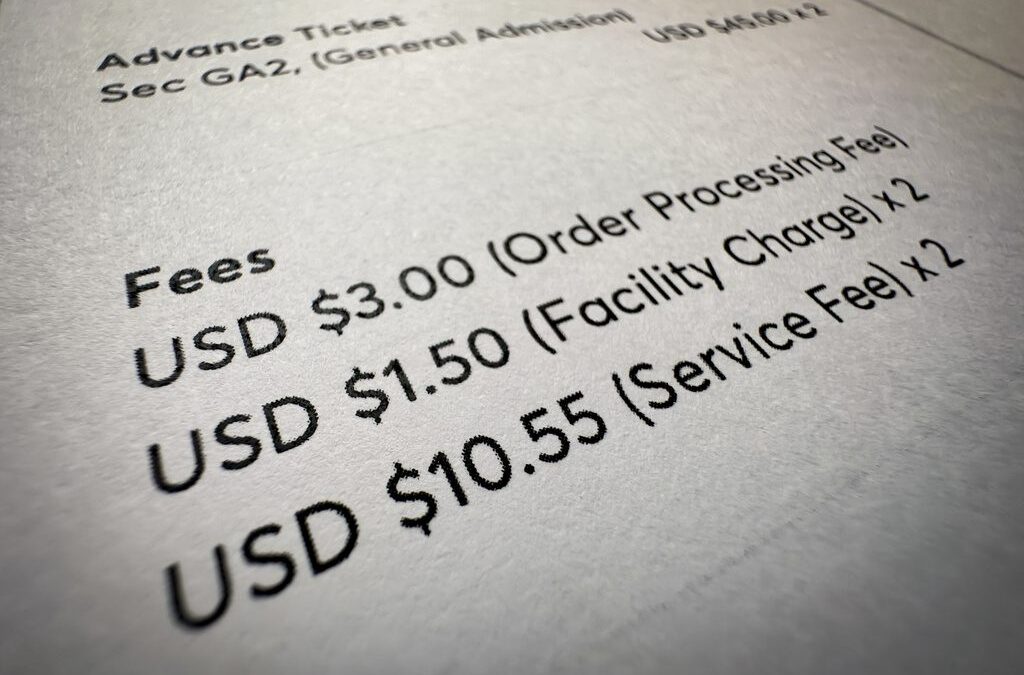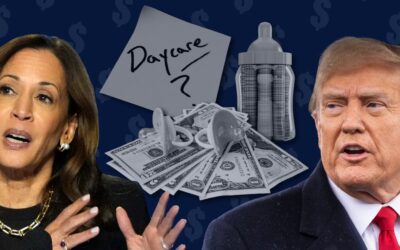
Shoppers shop at a grocery store in Wheeling, Ill., Friday, Jan. 19, 2024. (AP Photo/Nam Y. Huh)
Hours before the Super Bowl kicked off on Sunday, President Joe Biden delivered a message to food brands and other companies that have raised costs on families and kept them high while shrinking the size of products: cut it out.
“While you were Super Bowl shopping, did you notice smaller-than-usual products where the price stays the same?” Biden said in a video posted to social media. “Folks are calling it Shrinkflation and it means companies are giving you less for every dollar you spend. I’m calling on the big consumer brands to put a stop to it.”
The video represents the president’s latest effort to address persistently high food prices by calling out what he views as price gouging and corporate greed.
“There are still too many corporations in America ripping people off: price gouging, junk fees, greedflation, shrinkflation,” Biden said at an event last month in South Carolina.
Grocery prices have risen by more than 20% since the beginning of the pandemic, with inflation remaining stubbornly high even as costs have stabilized in other sectors.
In Pennsylvania, grocery prices rose 8.2% from Nov. 2022 to Nov. 2023, according to an analysis conducted by Consumer Affairs.
Data shows that prices of staples—such as eggs and milk—jumped more than 11% in 2022 and 5% in 2023, mostly due to residual economic impacts from the pandemic.
Many products have also gotten smaller, despite becoming more expensive—what Biden and other Democrats have referred to as “shrinkflation.”
These higher costs have hit families hard and evidence suggests they’re one of the key drivers of dissatisfaction with the economy.
A new poll from Data for Progress found that the majority of voters (57%) who are concerned about inflation have identified the cost of food and groceries as their top inflation-related concern going into the 2024 election. The poll also found that these voters primarily blame food manufacturers and grocery stores for the higher prices, believing that companies have been “raising prices to maximize profits.”
That belief has some merit. Grocery store and corporate food brand profits have risen in recent years.
In fact, while grocery store margins have stayed elevated, a new analysis from the White House Council of Economic Advisers found that other retailers’ margins have fallen back to more normal levels recently. The analysis suggests that these elevated profit margins could be contributing to the high price of food in grocery stores. The analysis also found that food and beverage stores had increased their margins by about 2% since the pandemic began, reaching the highest level in decades.
Price increases are finally slowing, however. US Labor Department figures show that prices for food consumed at home were up by just over 1% in December and the US Department of Agriculture (USDA) is predicting that prices will continue to decelerate throughout the rest of 2024.
The Biden administration is trying to do its part as well to ensure companies begin to pass on any savings to consumers.
“Our message is a very clear one that the president has and will continue to lean into, which is, if you’re a company whose input prices have come down and you’re not passing those savings along to the consumer, he will call you out,” Jared Bernstein, the chair of Biden’s Council of Economic Advisers, said in a virtual meeting with reporters earlier this month.
The administration has taken other steps to try and lower food prices.
The Federal Trade Commission (FTC) is expected to block a merger between Kroger and Albertsons–two of the largest grocery chains in the United States; it’s currently in the process of reviewing the deal.
The National Grocers Association, which represents independent grocers, has also called for stricter antitrust enforcement and said “the nation’s largest retailers have used their muscle to force food suppliers to offset higher production costs by charging their smaller rivals higher prices.”
The FTC is also considering enforcement actions under the Robinson-Patman Act, a nearly 90-year-old piece of legislation which requires suppliers of retail goods to offer the same terms to every entity they sell their products to.
Additionally, the USDA has spent hundreds of millions of dollars to help companies expand in the meatpacking industry, which is dominated by a few large entities. The department has also changed its calculations of federal food assistance benefits and adjusted them for inflation, which has in turn expanded availability to more low-income Americans, and helped more families deal with rising grocery costs.
“The cost of eggs, milk, chicken, gas, and so many other essential items have come down,” Biden said in South Carolina. “Americans, we’re tired of being played for suckers. And that’s why we’re going to keep these guys — keep on them and get the prices down.”

Sick of hidden fees on concert tickets and hotel stays? A new federal rule bans them.
Now, live event businesses and hotels must clearly list their prices in both their advertising and pricing information. American consumers on...

Trump’s tariff plan would raise prices and ‘reduce the living standard of Americans,’ economists say
Trump’s plan would effectively be a sales tax that disproportionately harms working-class families and could cause a trade war that hurts US...

Trump’s tariff and tax plan would raise taxes on 95% of Americans, report finds
In response to the report, the Harris-Walz campaign released an analysis of its own, outlining how Trump’s agenda would raise costs for over 5.3...

Trump’s economic plans would worsen inflation, experts say
Mainstream economists warn that Trump's plans to impose huge tariffs on imported goods, deport millions of migrant workers, and demand a voice in...

Harris wants to give working families a tax cut and raise taxes on corporations. Trump would do the opposite.
Kamala Harris has proposed increasing the corporate tax rate, expanding the child tax credit, and cutting taxes for more than 100 million working...




